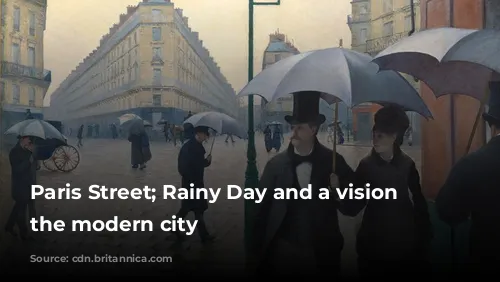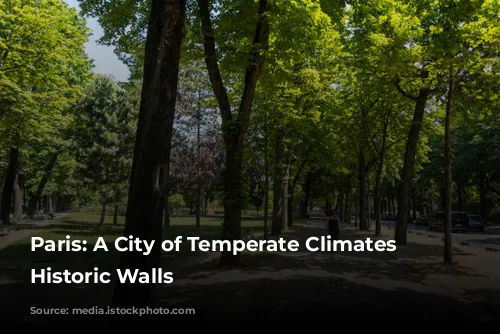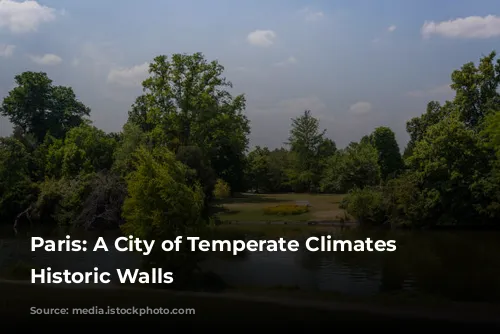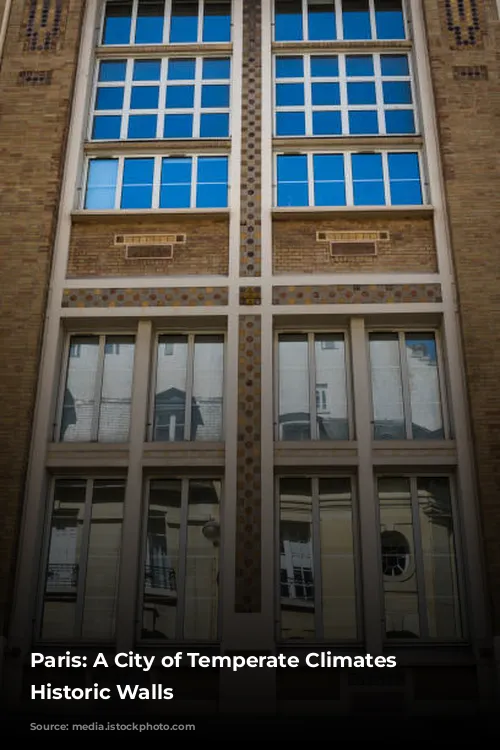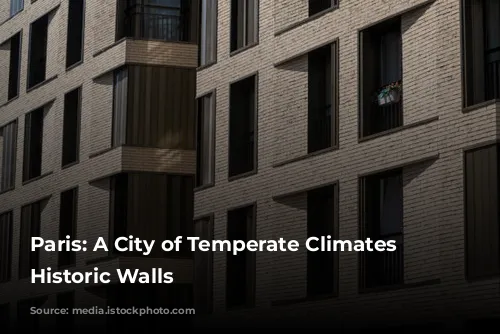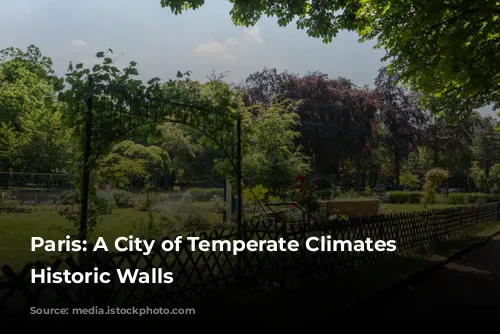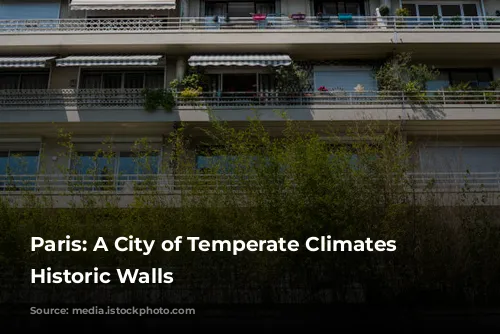Paris, the City of Lights, enjoys a temperate climate due to its location on the western side of Europe and its proximity to the Gulf Stream. While generally pleasant, Paris’s weather can be unpredictable, especially during winter and spring when sharp winds can chill the air. The average annual temperature hovers around 12°C (54°F), with July reaching a comfortable 19°C (66°F) and January dipping to a chilly 3°C (37°F). Freezing temperatures are common for about a month each year, with snow falling on about half of those days. Despite the occasional winter chill, Paris has taken steps to improve its air quality and ensure its water is safe for drinking.
A City Built by Walls and Boulevards
Paris’s history is interwoven with the construction and demolition of walls. The Île de la Cité, the city’s heart, has been fortified since ancient times. After barbarians sacked the Roman town on the Left Bank in the 3rd century, the fire-damaged stones were used to build a defensive wall on the island. This wall was rebuilt multiple times over the centuries, a testament to the city’s resilience. Even the earliest bridges, like the Petit Pont, were protected by fortified gates, a reminder of the city’s long struggle against invasion.
King Philip II, in the 12th and 13th centuries, built a new wall that enclosed both banks of the Seine River. Centuries later, Charles V expanded the Right Bank enclosure, adding the Bastille fortress in the east and the Louvre fortress in the west. Louis XIV, known for his grandeur, replaced Charles V’s walls with the Grands Boulevards in 1670, lining them with trees and adorned with triumphal arches at key locations. These boulevards, inspired by the arches of the Seine River, stretch from the Place de la Madeleine to the Place de la République, offering a glimpse into the city’s rich history.
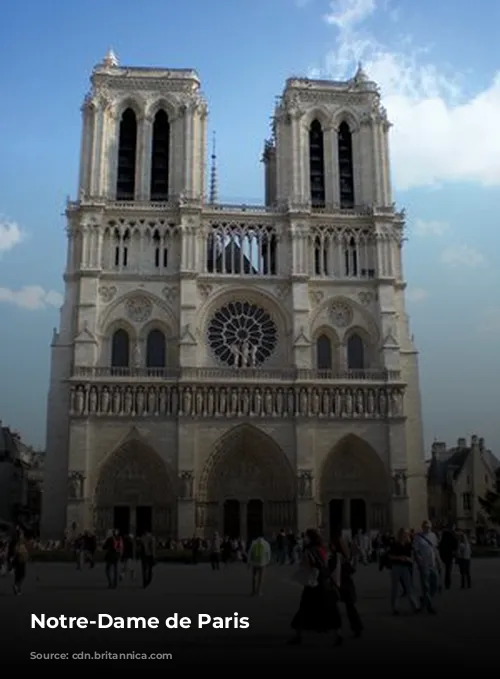
Walls Giving Way to Boulevards and Modernity
In the 18th century, a new wall was built with tollhouses designed to collect customs duties on goods entering Paris. These tollhouses still stand today, marking the city’s evolution. The last wall, built in the mid-19th century, was a formidable military installation that enclosed several hamlets outside the city’s core.
The 19th century marked a turning point in Paris’s development. The Industrial Revolution brought economic growth and population increases, leading to a surge in demand for housing and transportation. The collapse of Napoleon III’s empire in 1870 further fueled the city’s transformation. Baron Haussmann, Paris’s visionary city planner, demolished the farmers-general’s walls and built wide, straight boulevards that cut through the city’s labyrinthine streets. The 19th-century walls were eventually torn down, and the boulevards were extended in 1925, forever changing the cityscape.
The Île de la Cité: A Historic Jewel
The Île de la Cité, a ship-shaped island in the Seine River, is Paris’s historical heart. This island, roughly 10 streets long and 5 wide, is linked to the riverbanks by eight bridges, with a ninth connecting it to the smaller Île Saint-Louis. The Pont Neuf, built between 1578 and 1604, is the oldest of Paris’s bridges, despite its name. Its sturdiness is legendary; Parisians still use the phrase “solid as the Pont Neuf” to describe something strong and dependable.
The island is home to some of Paris’s most iconic landmarks, including the Palais de Justice, originally built by King Louis IX in the 13th century and expanded by Philip IV. This imposing building, with its Gothic chambers, housed the Parlement, the high court of justice, and its Great Hall, a symbol of Gothic beauty. Although fires have damaged much of the original structure, the Conciergerie, with its dungeons, remains a chilling reminder of the French Revolution. The Sainte-Chapelle, another architectural masterpiece, was built by Louis IX to house the Crown of Thorns, a relic considered to be the one worn by Jesus during his crucifixion. The chapel’s delicate Gothic design and stained glass windows make it a breathtaking spectacle.
Paris Today: A Legacy of History and Beauty
Today, Paris’s boulevards, old buildings, monuments, gardens, plazas, and bridges compose one of the world’s most beautiful and inspiring cityscapes. The Île de la Cité, with its rich history and iconic landmarks, remains a testament to the enduring spirit of the city. A visit to this island is a journey back in time, offering a glimpse into Paris’s past and a reminder of its lasting impact on the world.
